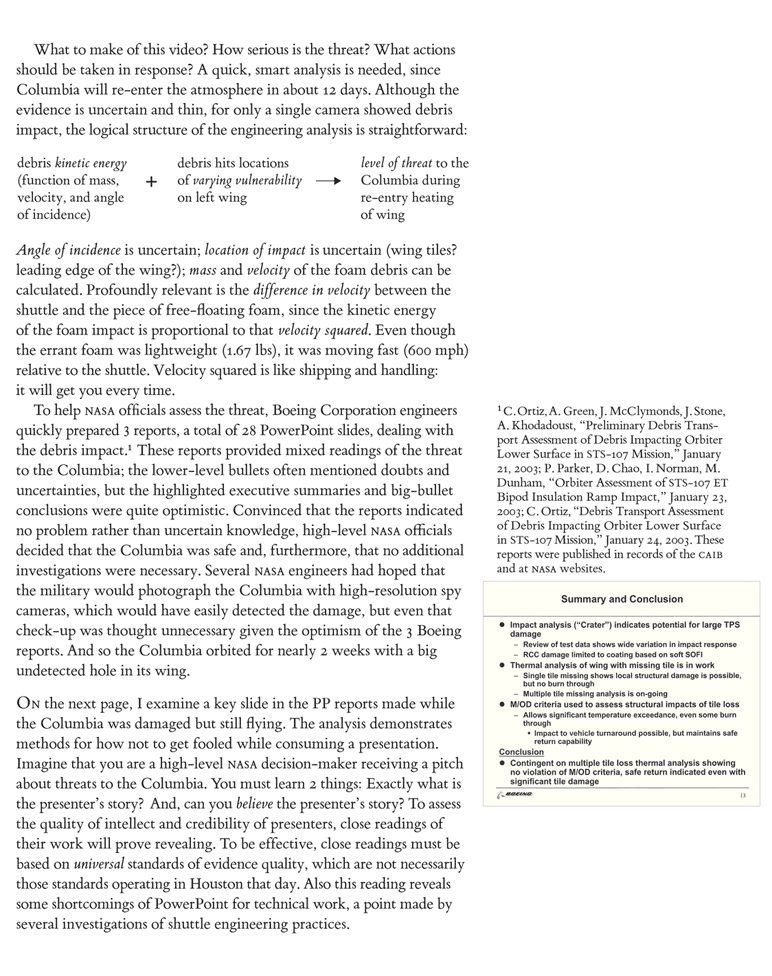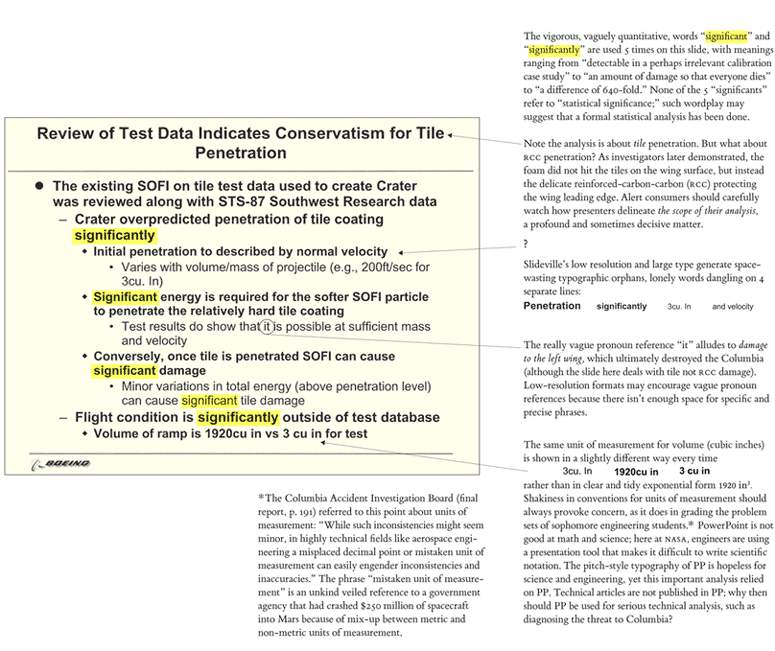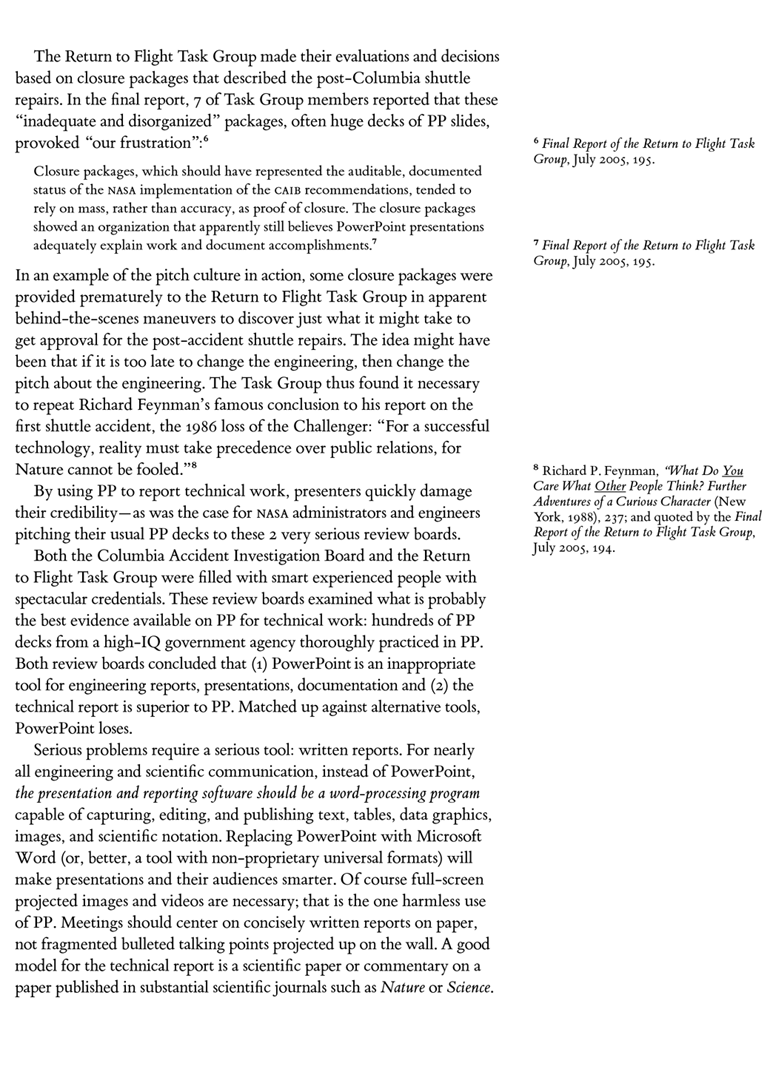The Culture of Powerpoint
Marton Trencseni - Thu 18 April 2024 - Business
Introduction
Last year, in 2023, Dennis Austin, one of the original developers of Powerpoint passed away. The news was posted on Hacker News and prompted a lively discussion of the merits of Powerpoint itself. I posted the following top-level comment (search for my alias Maro), which itself sparked a lively thread of responses:
I work in a Corporate where we have lots of "strategy" teams and PPTs flying around. What I learned is that PPT are more than a presentation format in this culture, they are a signaling tool:
• something that is "just" an email, or "just" something somebody said in a meeting doesn't carry much weight in Corporates
• .. but if you put it in a PPT with some graphics, it signals you've thought about it, and probably had some lesser minions also think about it and prepare a PPT
• .. further, if you put it in a PPT, that means you're serious about your position — it signals commitment
• .. and finally, a PPT shows that you know how to play the game, you're not some tech weirdo that thinks PPTs are irrelevant
PPTs are a cultural currency in Corporates.
In this post I will expand and extend my points above about Powerpoint in business settings, after pointing to some hard-learned lessons from Edward Tufte and Jeff Bezos.
Edward Tufte: The Cognitive Style of PowerPoint
Edward Tufte has many writings on Powerpoint, perhaps the most popular is the the titular The Cognitive Style of Powerpoint, which I highly recommend everybody to read. This collection of Powerpoint related snippets from Tufte also contains some excerpts from Cognitive Style.
Many of the writings above — which again I recommend to read directly in source form — use NASA as an example, because various Powerpoint decks and related organizational processes were made public after the Columbia and Challenger space shuttle accidents. The most interesting points Edward Tufte makes are as follows:
- Nearly all engineering presentations at NASA are made in Powerpoint.
- In the [Columbia] reports [assessing whether the space shuttle is safe to re-enter orbit], every single text-slide uses bullet-outlines with 4 to 6 levels of hierarchy.
- In their report, the Columbia Accident Investigation Board found that the distinctive cognitive style of Powerpoint reinforced the hierarchical filtering and biases of the NASA bureaucracy during the crucial period when the Columbia was damaged but still functioning.
- At the same time, lower-level NASA engineers were writing about the possible dangers to the Columbia in several hundred emails.. The text of about 90% of those emails simply used sentences sequentially ordered into paragraphs.
- Several of these emails referred to the three Powerpoint reports as the "Boeing Powerpoint Pitch".
- The language, spirit and presentation tool of the pitch culture had penetrated the NASA organization, even into the most serious technical analysis, the survival of the shuttle.
- As information gets passed up an organization hierarchy, from people who do analysis to mid-level managers to high-level leadership, key explanations and supporting information are filtered out.
- At many points during its investigation, the Columbia Accident Investigation Board was surprised to receive similar presentation slides from NASA officials in place of technical reports. The Board views the endemic use of Powerpoint briefing slides instead of technical papers as an illustration of problematic methods of technical communication at NASA.
- The Board makes an explicit comparison: some tools are better than others for engineering, and technical reports are better than Powerpoint.
- Instead of concise engineering reports, decisions and their associated rationale are often contained solely within Powerpoint slides or emails.
- In an example of the pitch culture in action, some decks were provided ahead of time to the Group in apparent behind-the-scenes maneuvers to discover just what it might take to get approvals. The idea might have been that if it is too late to change the engineering, then change the pitch about the engineering.
- Feynman: "For a successful technology, reality must take precedence over public relations, for Nature cannot be fooled."
- Both the Columbia Accident Accident Investigation Board (2003) and the Return to Flight Task Group (2005) were filled with smart experienced people with spectacular credentials. These review boards examined what is probably the best evidence available on Powerpoint for technical work: hundreds of Powerpoint decks from a high-IQ government agency thorough practiced in Powerpoint. Both review boards concluded that (1) Powerpoint is an inappropriate tool for engineering reports, presentations, documentation; and (2) the technical report is superior to Powerpoint. Matched up against alternative tools, Powerpoint loses.
- Serious decisions require a serious tool: written reports.
The original pages are shown below:

|

|

|

|

|

|
Jeff Bezos: The Amazon Six-pager
Another famous criticism of Powerpoint, also mentioned on the linked Edward Tufte page, is Jeff Bezos' banning of PPTs from meetings, and instead enforcing high-quality, written proposals and reports. I wrote about this when I summarized the excellent Amazon culture book Working Backwards in 2022. I will repeat the section on the Amazon Six-pager below.

Amazon relies far more on the written word to develop and communicate ideas than most companies, and this difference makes for a huge competitive advantage. Unlike most companies, Amazon does not use PowerPoint (or any kind of presentation software). Better informed people make higher-quality decisions, and can deliver better, more detailed feedback.
Written narratives are the primary communication tool used for proposals, plans, and process documentation. The company uses two main types of narrative:
- The six-pager: A document used to describe, review, or propose an idea, process or business.
- The PR/FAQ: A document used to develop and iterate on product ideas.
Per Jeff Bezos: The reason writing a good 4 page memo is harder than writing a 20 page PowerPoint is because the narrative structure of a good memo forces better thought and better understanding of what’s more important than what, and how things are related. PowerPoint-style presentations somehow give permission to gloss over ideas, flatten out any sense of relative importance, and ignore the interconnectedness of ideas.
Benefits of an effective six-pager:
- Six pages is optimal for a 60 minute meeting where the meeting participants spend the first 20 minutes collectively reading the document individually (in silence while taking notes).
- The document contains all essential information. Participants can review the document, uninterrupted, in its entirety; it is standalone and doesn’t require a presenter to fill in the blanks.
- The document is portable and scalable. It can be circulated easily and read by anyone at any time.
- Anyone can edit or add notes to the document.
- The document serves as its own record.
- Written narratives contain 7-9 times the information density of a PowerPoint.
- People read three times faster than the typical presenter can talk.
A complete narrative should also anticipate the likely objections, concerns, and alternate points of view that we expect our team to deliver. Writers will be forced to anticipate smart questions, reasonable objections, even common misunderstandings—and to address them proactively in their narrative document.
The six-pager can be used to explore any argument or idea you want to present to a group of people—an investment, a potential acquisition, a new product or feature, a monthly or quarterly business update, an operating plan, or even an idea on how to improve the food at the company cafeteria.
Meeting format:
- Presenter does not verbally repeat the document.
- 20 minutes of reading the narrative.
- 40 minutes of discussion.
- Someone (not the presenter) should be charged with taking notes on behalf of the audience.
Who's fault is it, anyway?
NASA and Amazon are both prestigious organizations that can afford to hire highly intelligent, driven and honest people, likely clustered in the top 10% of the Bell curve. Yet, for both we have identified serious issues stemming from the use of Powerpoint. What can we expect in an organization that samples its employees from across the Bell curve, not just the top decile? It's fair to assume that the results will be at least as poor as those seen at NASA and Amazon.

Flipping the coin, when faced with ineffective processes driven by Powerpoint decks at a large company, it's good to remember that even NASA and Amazon ran into problems. It's not a phenomenon specific to a company, and not explained by low hiring bars at the company, that due to its size or industry or geography is forced to hire across the talent spectrum.
Engineering vs Business context
In the writings above, Edward Tufte argues that Powerpoint is a poor tool for Engineering communication. Jeff Bezos already extends Tufte's arguments into the Business domain. Clearly human life, as secured and protected by Engineering decisions at the NASA Space Shuttle program is more important than incremental profits at a retailer, but, to any retailer (like Amazon), who is not comparing their decisions to NASA decisions, those incremental profits are of primary importance! Or, to flip the coin, if something (writing high-quality written reports instead of low-resolution Powerpoints) is worth doing in a high-stakes scenario, that does not mean it's not also doing in other important (but perhaps less high-stakes) scenarios!
In conclusion, Edward Tufte's recommendation for written reports also applies for preparing non-technical business decisions.
The Culture of Powerpoint in Business Settings
Internal proposals are always sent as Powerpoint decks at large corporations — this is the domain where my original Hacker News comment applies the most. Powerpoints are more than a presentation format in this culture, they are a signaling tool. The rationale behind this statement is:
- A proposal that is "just" a Word document, "just" an email, or "just" something somebody said in a meeting does not carry much weight in corporate culture.
- .. but, if you put it in a Powerpoint with the right corporate graphics, it signals you've invested time into your position, and had your team make a Powerpoint about it.
- Further, if you put it in a Powerpoint, it means you're serious about your position, it can be sent around to others — it signals commitment.
- Finally, a Powerpoint signals that you know how to play the game.
- A "good" deck will be complex, touch upon many areas of the business and "show it off" by using lingo and abbreviations from the corporate's business arena — but almost nobody in the audience is an expert at all domains, so very few fully understand the deck!
Powerpoints are a cultural currency in corporates. They are so important, there are internal teams called Strategy teams whose primary jobs is to make Powerpoints, to translate linear narrative, reasoning and explanations to what Edward Tufte calls the "Cognitive Style of Powerpoint". How is such a Powerpoint born for a technical proposal?
- The engineering manager writes a 5-10 page narrative text, with supporting graphics (eg. in Word or Google Docs).
- The written narrative is passed to the Strategy team. Weeks are spent re-working the narrative into a 20-30 page Powerpoint. At this step the Strategy team works with various Finance teams to bring the proposal's financial assumptions in sync with budgets.
- The deck is not sent to the final audience (say, a CxO) initially. First, the sender department's Strategy team converses with the recipient department's Strategy team about what the deck should look like, reminiscent of this section from Tufte: "Some decks were provided ahead of time to the Group in apparent behind-the-scenes maneuvers to discover just what it might take to get approvals. The idea might have been that if it is too late to change the engineering, then change the pitch about the engineering." This process could take months!
- Eventually the final deck is presented the executive audience, usually CxOs.
In the startup sector experimentation and learning culture are the de facto standard — but not at corporates. So in a pitch, saying that we have a certain long-term ambition (plan), but the details (including how many people we will need, costs, returns) are hard to estimate, so we will run experiments in the first few months, build, measure and learn, and then build a more detailed plan — saying this is not seen as professional in corporates. Instead, a detailed up-front waterfall-style plan is preferred and seen as professional.
For an internal pitch to be serious, it has to be quantified. It needs to contain timelines, costs and returns, ie. why the project is worth building. This is incorporated into the deck in step 2 above, when the Strategy team works with Finance teams and syncs numbers with budgets. However, even in well run companies, when planning for multi-year projects, these numbers are hard to estimate. However, budgets operate with point estimates, so at this stage all uncertainties and range estimates will be replaced by point estimates. However, many months later, the reader will only see the final point estimates, without having context around the uncertainties and confidence around these numbers — the reader will subconcsiouly assume that she is seeing high-quality, high-confidence estimates! This is one of the root causes that create waterfall-style plans in corporates.
To sum up, the core problems in the corporate settings are:
- Decks have the content-specific problems as described eloquently by Tufte, such as poor typography, poor visuals, truncated sentences, cryptic acronyms, etc. Low-resolution, truncated Powerpoint decks are preferred instead of high-quality written materials — Edward Tufte's observation.
- Instead of communicating information unambiguously and clearly so that a decision-maker can actually make a high-quality decision, decks are purposefully biased to push the decision-maker towards a desired decision.
- Decks are built around a waterfall-style planning process, instead of embracing an experimentation and learning culture.
- Decks are virtually never pre-read and thought through before meetings — Jeff Bezos' observation. As a result, the Powerpoint is rarely read or presented in full. At best it will be sent around to meeting participants afterwards, who often only have time to scan it.
Conclusion
The way forward is two-fold:
- Decision-support content should be presented as a high-quality written narrative.
- The material should present pros and cons of multiple options, without biasing the readers towards a desired decision.
- Most decisions should be treated as two-way doors — waterfall-style decision processes to support waterfall-style projects should be avoided altogether in favor of an experimentation and learning culture.